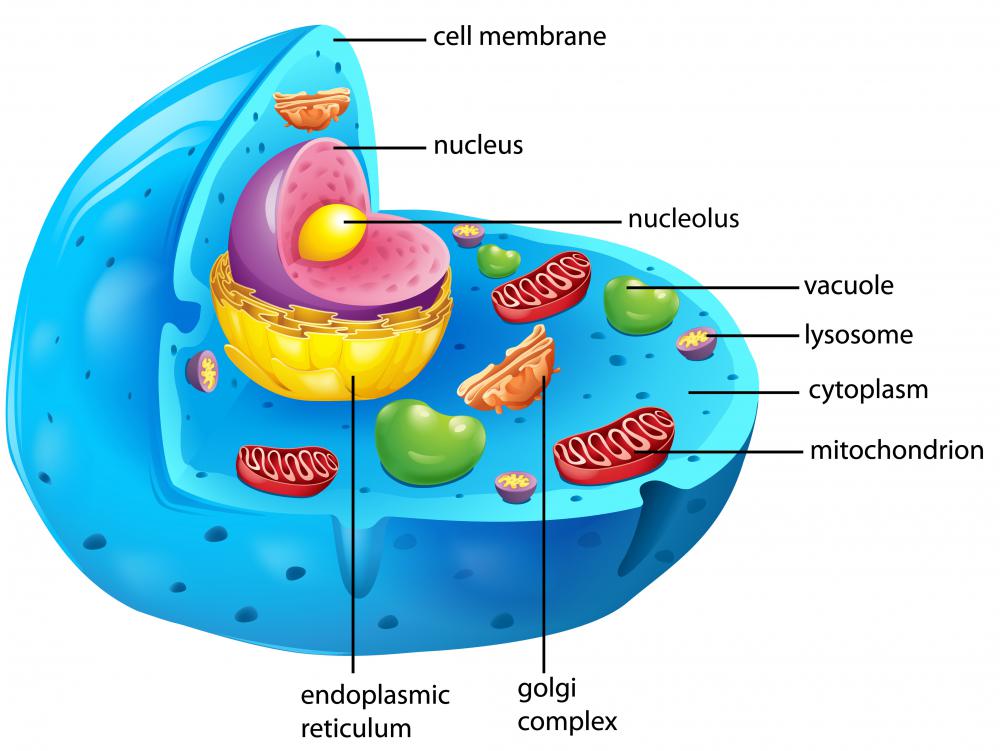At WiseGEEK, we're committed to delivering accurate, trustworthy information. Our expert-authored content is rigorously fact-checked and sourced from credible authorities. Discover how we uphold the highest standards in providing you with reliable knowledge.
What Is the Relationship between Membrane Potential and Action Potential?
Resting membrane potential is a term for the electrical condition of all cells of the human body that show nearly steady-state receptivity to "excitable" neuron cells. When action potentials are created in neurons to excite neighboring cells to transmit information throughout the central and peripheral nervous systems, the receptive membrane potentials can change potential readiness to receive and pass information along to neighboring cells. In this manner, neurons pass information along to other neurons, or muscle, organ, and skeletal structures throughout the body. The communication networks for the nervous systems depend on good information transfers between cells to effectively regulate all cognitive, emotional, sensory, and regulatory functions in the body.
Changes occur in neuron membranes due to incoming messages from nearby neurotransmitters, or due to illness or injury imbalances. Normally, there are two types of junctions between neurons for the passing of information between neurons, organs, or muscles. Some neurons affect the nearby membrane potential and action potential of other neurons through messenger protein molecules, operating somewhat slower than bioelectrical transmission. Other neurons pass information through bioelectrical or chemical-electrical influences on neighboring cells across little gulfs, called synapses, which lie between cells. Changes in the chemical makeup across gated membranes within the neuron cells create electrical spikes of action potential, leaping synapses to the neighboring cells.

There are three main chemical ions, sometimes called electrolytes, for neurotransmitter communication from cell to cell on the molecular level in the body. These three are potassium, sodium, and chloride. Chloride is basically of a negative charge character, and sodium and potassium are of positive electrical character.
In bioelectrical transmissions, these chemicals cause cell membranes to open and close gates through the membranes to change the balance of the chemicals both within and outside them. These membrane changes create changes in resting membrane potential and action potential that create electrical charges for information transmission through neurotransmitters to other cells. Imbalances of any of these chemicals can have serious consequences for the body that can lead to conditions like sleep disorders, Parkinson's disease, or schizophrenia.

Action potentials are a cell membrane state that can be seen as electrical nerve impulses or spikes of electrical activity from cell to cell. When information passes from cell to cell, these action potentials bridge the synapses with information to be passed. When commands from the central nervous system must be transmitted to peripheral nervous systems to move muscles or stimulate an organ, the instigation of action potentials along the chain of command has a ripple effect throughout the resting membrane potential and action potential of all cells within the vicinity of the passing information. As the action potential of a cell excites depolarization in neighboring cells, the information moves quickest through the bioelectrical channels.

One neurotransmitter that works along the messenger protein information transmission channels is dopamine. Serotonin, another hormonal neurotransmitter, works best along the biochemical channel transmission routes. Good transfer of information can often be the difference between good and ill health throughout the body.
AS FEATURED ON:
AS FEATURED ON:














Discuss this Article
Post your comments